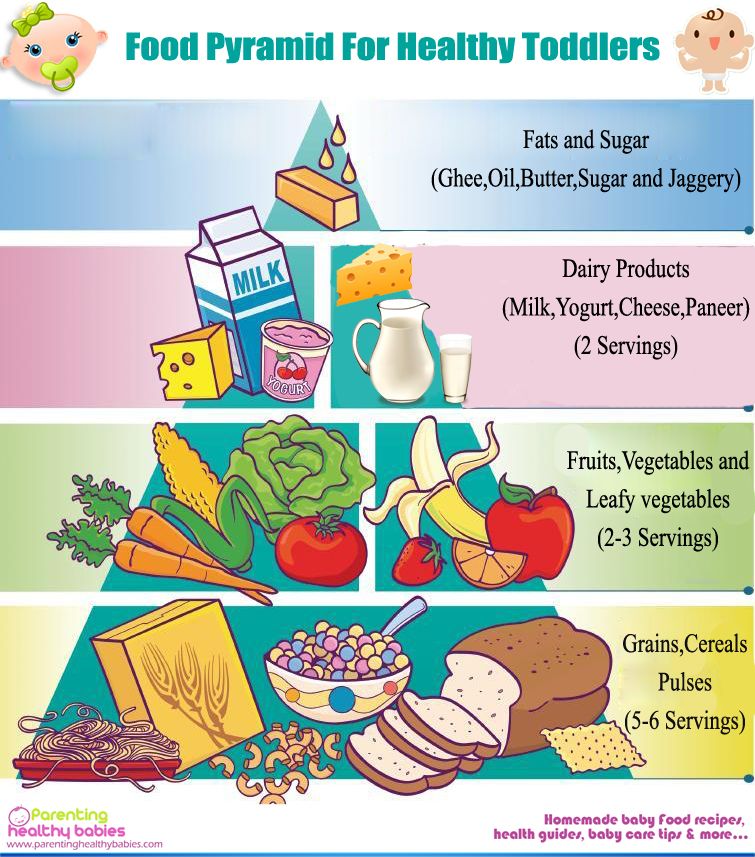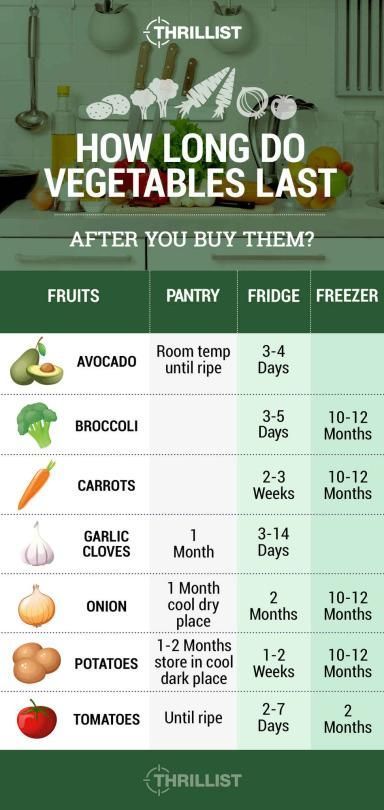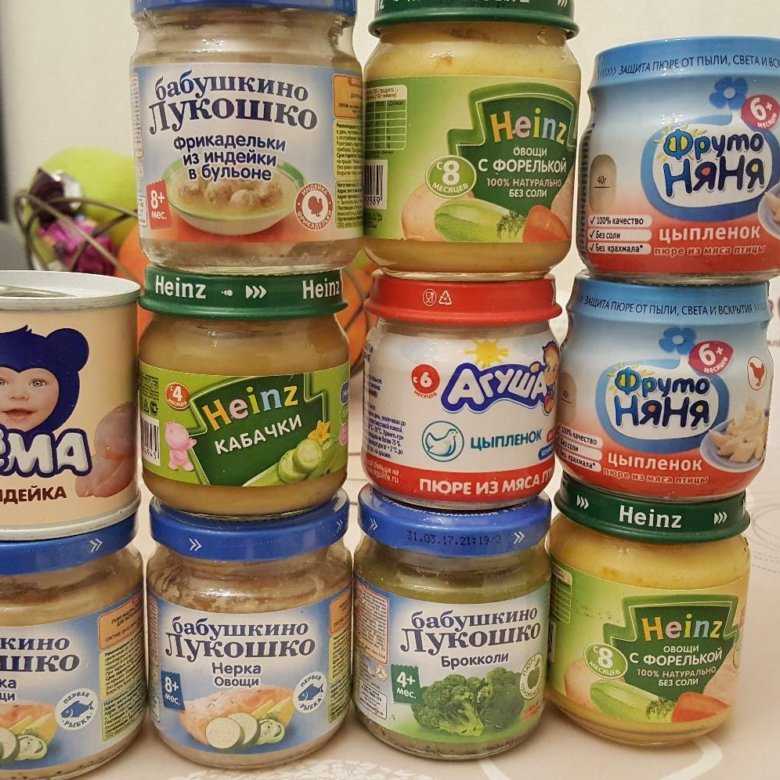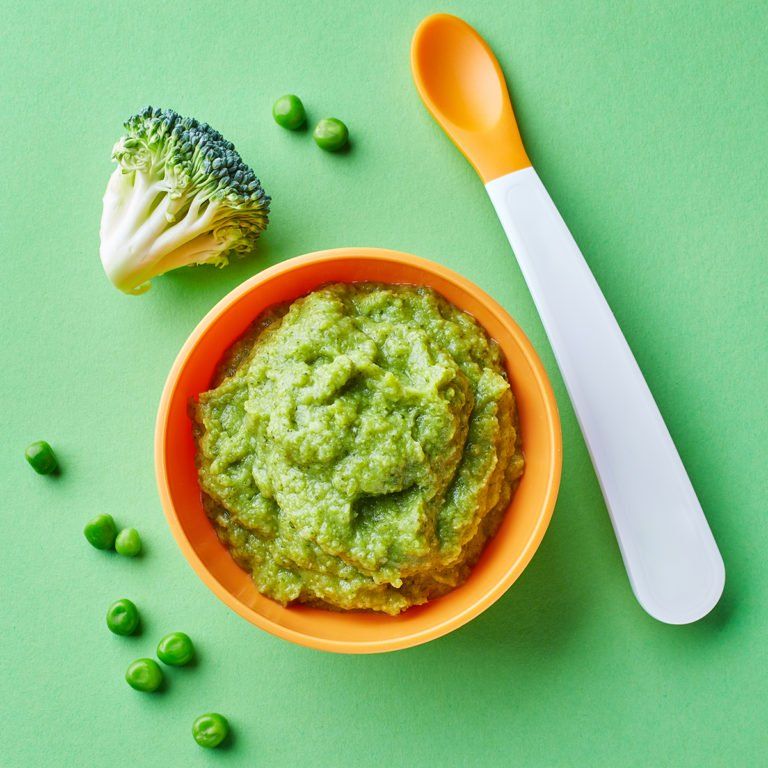What to feed my baby chickens
What to Feed Baby Chickens
Chickens 101 Nutrition Raising Baby Chicks
Kassandra Smith
Senior Editor • Backyard Chicken Coops
Last Updated: 26 June 2020
Like all newborns, baby chicks need special attention. Chicks need egg-cellent nutrition to equip them to travel the journey from chick to fully feathered adult. From down to feathers, from peeps to clucks, from an almost imperceptible nub on the top of their heads to pretty red combs, a chicken undergoes the biggest and most rapid transformation from the day they hatch up until about eight weeks old when they are almost at three quarters of their adult weight. That’s quite egg-straordinary, I know! So, what type of fuel do these amazing critters need for this awe inspiring journey? Let’s stake a “peck” and egg-splore the nutritional needs of baby chicks!
First things first, a baby chick needs access to fresh clean water at all times. Water plays a key role in a baby chick’s overall health and wellbeing by aiding most of its bodily functions. Chicks and mature chickens alike consume approximately double the amount of water as compared to feed and therefore, a lack of it can seriously affect a chick’s health.
For starters, to get a jump-start in life, chicks begin by pecking at Chick Starter! Chick Starter contains all the essential nutrients a chick needs to grow and develop into either an egg-cellent egg layer or a robust cock-a-doodler! Typically, a chick will eat a starter mix up until eight weeks old; however, many commercial brands now sell chick starter as Chick Starter/Grower and it is fed up until Point of Lay in hens or at sixteen to eighteen weeks for the young gentlemen. A great alternative to commercial chick starter is a wonderful concoction of two staple ingredients; eggs and oatmeal. Simply, hard boil some eggs, mash them up and mix with oatmeal. Although, if you are raising a large number of fuzzy little chicks, feeding commercial starter is a wise choice and is available at most farm supply centers.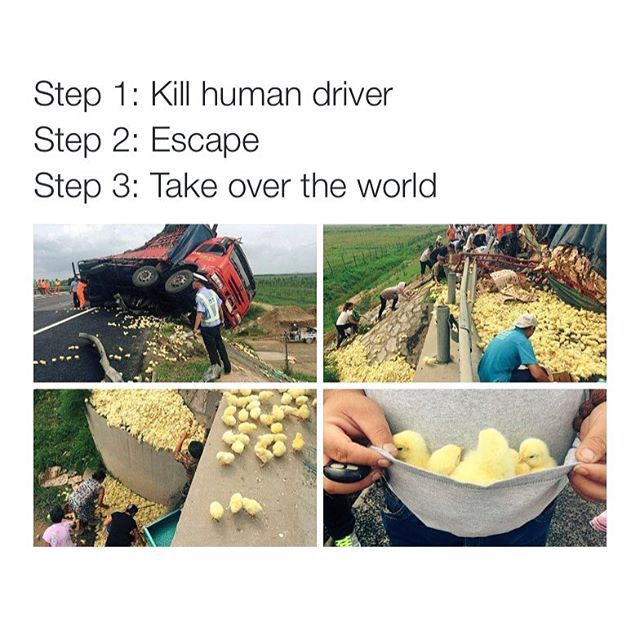
As with humans, accurate nutrition in these early stages is essential to ensure your chick's growth. Even the smallest inaccuracies in these early stages could cause them serious health issues and even death. To become confident and learn all there is to know about raising healthy happy chicks into egg-laying hens, visit Chickenpedia. They have a comprehensive course that will give you step-by-step instructions at every step of the way. I highly recommend them to all my readers.
The anatomy of chick starter begins with a most necessary nutrient-protein. Next to water, protein, both plant and animal, is the second most essential nutrient for young chicks. This star body builder stimulates the growth of muscles, tissues and organs-it’s basically what makes your wee ones grow. Feel free to offer your young chicks some small worms plucked after a spring or summer shower-nature’s homemade protein! Carbohydrates, fats, and vitamins and minerals make up the rest of the cast of nutrients needed by your ever growing wee chooks. Rest assured, though, in the fact that commercial chick starter comprises everything a baby chick needs to mature into a lovely hen or dapper rooster.
Rest assured, though, in the fact that commercial chick starter comprises everything a baby chick needs to mature into a lovely hen or dapper rooster.
Whilst I can give you some knowledge you get you started, it's our friends over at Chickenpedia that can give you a fully comprehensive guide to raising baby chickens. They cover everything you need, from food & water to temperature and vaccinations, so you can experience all the triumphs and avoid disasters with these precious little fluffballs.
Now, let’s get down to the nitty gritty matter of offering your baby chicks grit. Do baby chicks or growing young chicks need grit? Basically, if your babies are only eating starter, then they really don’t need added grit. If however, you begin adding supplemental foods such as kitchen scraps and treats, then a little bit o’ grit is necessary to aid digestion. Grit is egg-actly what it sounds like-minute pieces of earth, stone, and sand. If you live in a nice temperate climate, and your babies are out and about much of the time, they will most likely “peck up” sufficient grit to balance out their diet.
Do you give your baby chicks shell grit? Tell us in the comments below, I would love to hear from you.
An alternative to commercial chick starter, is to simply make your own baby chicken food. Although this choice provides you with the knowledge and peace of mind that your babies are getting egg-actly and only what you put into it, it is a complex process and can be difficult attempting to purchase all the necessary ingredients and then measuring out the egg-act quantities.
There really are no guidelines as to the amount of feed to offer baby chicks. Being the “always hungry” ravenous little critters that they are, it’s just fine to keep their feeders filled and at the ready. They will peck and peck until their little bodies let them know they’ve reached their fill. Then, being the egg-spert little poopers that they are, they’ll poop it right out again. Uh, oh…time to clean the bedding, yet again! Such is the life of a chicken keeper-aren’t you the lucky clucky one! Ha Ha
Oh and… I should also mention, click here to check out Chickenpedia.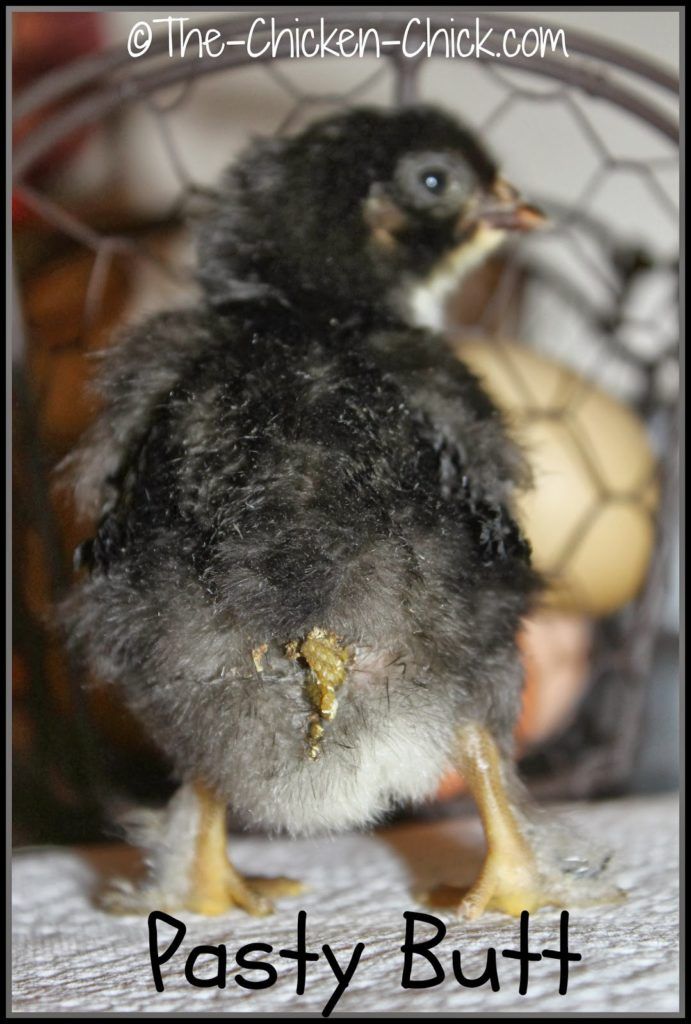 As a member, you will get access to the Ultimate Chicken Health Course. I highly recommend this to all of my readers because it has everything you didn’t know you needed to know (and lots of free guides). So, don’t wing it. Click here to check out Chickenpedia.
As a member, you will get access to the Ultimate Chicken Health Course. I highly recommend this to all of my readers because it has everything you didn’t know you needed to know (and lots of free guides). So, don’t wing it. Click here to check out Chickenpedia.
Sources and further reading
Please enable JavaScript to view the comments powered by Disqus.
Types of Food Baby Chicks Can & Cannot Eat
1 December
Chickens are great companions. They provide fresh eggs, nutrients for your lawn and years of entertainment with their big personalities. Best of all, baby chicks are easy to feed, willing to finish almost any of your daily leftovers.
A baby chicks’ diet is extremely versatile, but there are some foods to rethink before throwing them into the coop. Here, we’ll outline the nutrient-dense foods baby chicks love and the leftovers to keep in your compost pile.
Here, we’ll outline the nutrient-dense foods baby chicks love and the leftovers to keep in your compost pile.
What Are the Essential Nutrients for Chickens?
Baby chicks require a more nutrient-dense diet than their adult counterparts. When feeding your baby chicks, ensure their feed has the following nutrients:
- Protein: After hatching, a chick’s diet should include approximately 18% to 20% protein. Protein builds chicks’ muscles, promoting strength and bone integrity during their crucial developmental stages. As baby chicks reach 19 weeks old, gradually taper their protein intake to about 16% of their diet.
- Vitamins: All poultry require fat- and water-soluble vitamins. Specifically, they require all vitamins except vitamin C, including vitamin A, D, E and K, niacin, folic acid, biotin, thiamine and riboflavin.
- Minerals: Minerals are equally important. Baby chicks require a diet with calcium, phosphorus, magnesium, iron and copper, among others.
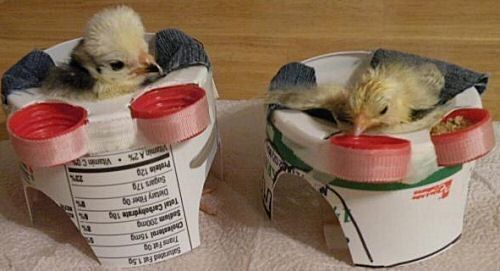
- Grains: Most chicken feeds incorporate healthy grains, like corn, wheat and soybean meal. These grains act as sources of vitamins, oil and protein, which all poultry require for energy.
- Fats: Most of a chicken’s fat content comes from oils that contain linoleic acid, an important fatty acid. Fatty acids break down vitamins and minerals, allowing chickens to receive all of their benefits.
Baby chicks’ feed should provide at least 90% of their nutrition, with the remaining 10% from their pasture.
On top of their feed, poultry require a constant source of water. Chickens drink almost three times their weight in water. A good water-to-chicken ratio is one quart per four chickens.
What Can Baby Chickens Eat?
Do you plan on feeding your baby chicks a homemade diet? Consider incorporating these nutrient-rich foods:
1. Worms
Chickens love worms! Worms naturally exist in a chicken’s environment, so it’s in their biological makeup to enjoy worms. Specifically, baby chicks can eat mealworms and red worms. Both are great sources of protein, but avoid feeding your baby chickens too many worms, or it may overwhelm their system.
Specifically, baby chicks can eat mealworms and red worms. Both are great sources of protein, but avoid feeding your baby chickens too many worms, or it may overwhelm their system.
2. Crickets
As with worms, baby chicks can eat crickets, and they often do in their natural environment. Crickets are high in protein, fat and carbs, making them an ideal snack, in moderation, for baby chicks.
3. Tomatoes
Baby chicks can eat tomatoes, but they can’t eat the plant, leaves or flowers as they contain poisonous solanine. Tomatoes themselves are full of essential vitamin K, folic acid, fiber, potassium and antioxidants. If you have a garden, toss any malformed tomatoes into your coop. Your chickens will be thankful!
4. Oatmeal
Oats are considered a superfood, full of vitamins, minerals and some protein. Baby chicks can eat both raw oats and warm oatmeal every now and then. Adding birdseed and plain yogurt boosts oatmeal’s nutrients, too!
5. Strawberries
Baby chicks can eat fruit, and they especially love strawberries. Strawberries contain many vitamins and minerals, namely iron, copper, magnesium, Vitamin B and potassium. Also, strawberries are packed with other anti-inflammatory antioxidants that keep your baby chicks healthy.
Strawberries contain many vitamins and minerals, namely iron, copper, magnesium, Vitamin B and potassium. Also, strawberries are packed with other anti-inflammatory antioxidants that keep your baby chicks healthy.
6. Bananas
If you have any brown, spotty bananas, your baby chicks will gladly eat them for you! Baby chicks can eat bananas, but avoid feeding them any unripe bananas. Bananas are high in Vitamin B6 and pyridoxine and a good source of magnesium, copper and healthy carbs.
7. Apples
Baby chicks can eat apples, but you should chop them up and remove any seeds for easier consumption and digestion. Apple sauce is another good apple alternative for chick food. Apples are a good source of carbs and contain fiber, potassium and Vitamin K, too.
8. Lettuce
When it comes to vegetables, baby chicks can eat lettuce, as well as kale, turnip greens and chard. Romaine lettuce is high in phosphorous, magnesium, potassium, vitamin K and folate, supplying your baby chick with almost all of the necessary minerals. Avoid iceberg lettuce, however, as it’s low in nutritional value and may cause diarrhea in your baby chickens.
Avoid iceberg lettuce, however, as it’s low in nutritional value and may cause diarrhea in your baby chickens.
9. Watermelons
Baby chicks can eat watermelons, but they should never consume watermelon rinds or seeds. Baby chicks may benefit from watermelon on hot summer days as an added source of hydration. Otherwise, it doesn’t offer many nutrients as chick food.
10. Grass
Adult hens typically peck through grass for insects and eat any smaller pieces of grass. Usually, day or week-old chicks won’t show much interest in eating grass. Some owners give their chicks the option, however, because it encourages foraging.
What Can’t Baby Chickens Eat?
Some of your groceries, however, are best left for your compost pile. Foods that baby chickens cannot eat include:
- Onions
- Chocolate
- Avocados
- Eggplant
- Peanuts
- Moldy Bread
- Rhubarb
- Pickles
All of these foods contain different toxins that make baby chicks, and all other poultry, feel sick — or even cause death in extreme cases.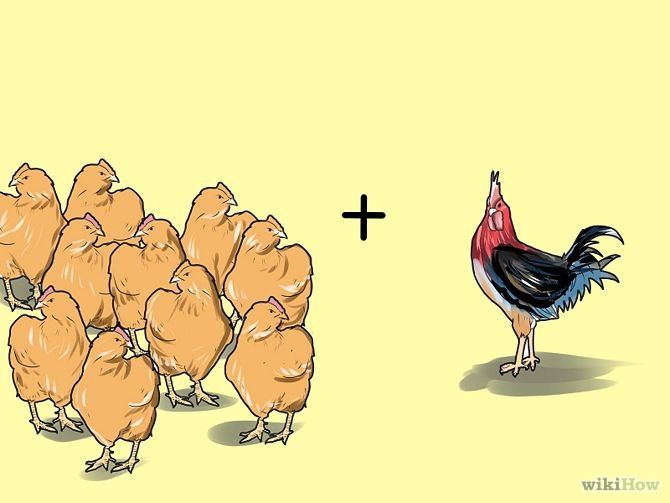 Most chickens instinctively avoid these toxic foods. If your baby chicks do consume these toxins and you notice illness symptoms, give them plenty of access to electrolytes and extra nutrients. Chickens heal themselves over time in less severe cases.
Most chickens instinctively avoid these toxic foods. If your baby chicks do consume these toxins and you notice illness symptoms, give them plenty of access to electrolytes and extra nutrients. Chickens heal themselves over time in less severe cases.
What Is the Best Food for Baby Chicks?
The best food you can give your baby chicks is organic chicken starter feed. The foods listed above are healthy for chicks — and you’re encouraged to recycle any leftovers — but they may receive too many or too little nutrients.
Organic chicken starter feed is packed with essential nutrients like:
- Organic carbs, including corn, soybean meal and wheat
- Organic soybean oil
- Calcium carbonate
- Zinc sulfate
- Copper sulfate
- Calcium iodate
- Vitamin D3
- Vitamin E
- Vitamin A
- Vitamin B12
- Riboflavin
- Folic acid
Opting for organic chicken starter feed over non-organic alternatives ensures your baby chicks receive non-medicated and non-GMO nutrients. Natural feeds contain little to no cheap filler products, giving you more nutrients for your money and your chickens a healthier lifestyle.
Natural feeds contain little to no cheap filler products, giving you more nutrients for your money and your chickens a healthier lifestyle.
How Much Should You Feed Baby Chicks?
Baby chickens are good at eating what they need. Ensure your chicks have a constant supply of organic chicken starter feed and refill their supply as needed.
Because baby chicks and adult chickens require different amounts of nutrients, it’s best to separate them until the chicks are at least 2 months old. Plus, older chickens tend to be aggressive with smaller chicks, sometimes bullying them away from food. Keep an eye on every chick and make sure they’re all getting an equal share of chick food.
Shop Organic Chicken Starter Feed at Nature’s Best Organic Feeds
Kreamer Feed believed in organic food well before the grocery chains. Since 1998, we have been the leading certified organic feed manufacturer — best known for our brand, Nature’s Best Organic Feeds.
If you’re looking for the best feed for your baby chicks, choose our high-protein organic chick starter.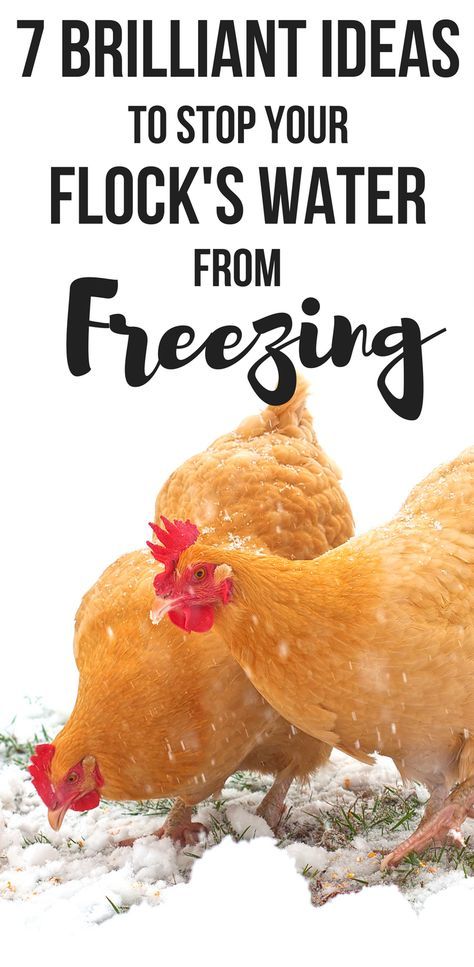 Our chicken feed is packed with essential nutrients, perfect for your growing backyard animals and baby chicks.
Our chicken feed is packed with essential nutrients, perfect for your growing backyard animals and baby chicks.
Learn more about our organic chicken starter feed online. You can find our products at your nearest Tractor Supply Co., which you can locate directly on our product page!
diet in the first days of life, chicken feed norms
| The diet of chickens, especially small ones, is different from the diet of adult chickens. Many breeders who raise chickens in the household are interested in how and what to feed the chicks so that they develop properly. For healthy growth, chickens require a balanced diet in sufficient quantities. The composition of the products depends on the direction and age of the chicks. |
Content:
- What does healthy chicks eat?
- General rules for formulating rations
- What to feed chickens?
- General rules for feeding
- Feed for chickens of various ages
- Feeding frequency
- Feeding Features
- Farmer's Councils
What does a healthy chicken diet consist of?
Sources of proteins, vitamins, micro and macro elements are products of plant and animal origin, as well as substances synthesized in the laboratory.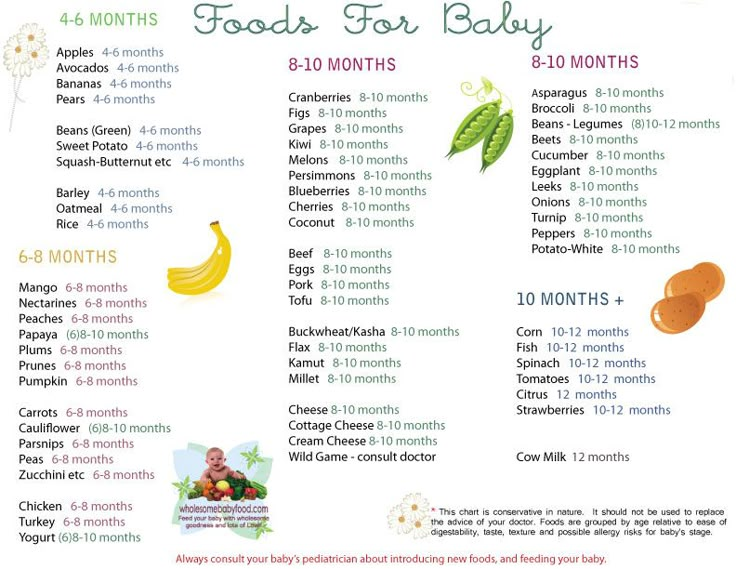 For the production of finished formulations in the factory, only high-quality proven raw materials are used. In feed for laying hens and broilers are introduced:
For the production of finished formulations in the factory, only high-quality proven raw materials are used. In feed for laying hens and broilers are introduced:
|
It is quite difficult to independently calculate the proportions and mix the components thoroughly without the appropriate equipment.
General dietary guidelines
The terms of growing meat breeds are 1.5-2 months, laying hens - up to six months. During this time, the bird should gain weight of 2.5-3 kg. To accelerate the growth of muscle mass in broilers, it is recommended to use specialized feed. It fully meets the needs of the bird in proteins, fats, carbohydrates, vitamins and minerals. The composition and consumption of feed should be appropriate for the age of the chicks.
At 1-2 weeks of life, the foundation of the skeleton is laid in chickens, muscle mass increases at an average pace. At this time, it is necessary to introduce a sufficient amount of proteins, fiber, and mineral components into their diet.
In the growth phase, the chicks gain weight intensively. They need as many amino acids and proteins as possible, which act as a building material for cells, as well as complex carbohydrates. The dose of vitamins and minerals received with food is increased.
At the finishing stage, the amount of carbohydrates is reduced so that the broilers gain more muscle mass, and not fat. At this stage, it is important to prevent weight loss. For these purposes, finishing compound feed is introduced into the diet.
What to feed chickens?
Cereals form the basis of the diet.
| Corn | One of the most useful and nutritious ingredients. Corn is the leader among grains in terms of protein content, while it contains less fiber than other cereals. The product is easily digested and well absorbed. The product is easily digested and well absorbed. |
|---|---|
| oats | Source of many amino acids. It is considered a dietary product, but contains a lot of fiber. In large quantities, it causes blockage of the intestines, so its share in the composition of the feed does not exceed 20%. Oats are given in a purified form, completely removing the film from the grains. The size of the fraction depends on the age of the bird. Sifted oatmeal is usually added to prestarter formulations. |
| Wheat | Contains a large amount of vitamin E, B. Feed wheat is usually used in bird feed. The percentage can be up to 30%. |
| Rye | It is a source of a number of useful proteins, but contains too much mucus, which negatively affects the digestive system of chickens. It is added to some feeds in small quantities. |
| Barley | Practically not inferior to oats in useful properties, but also contains a lot of fiber. It is introduced into the composition only in a purified and sifted form. It is introduced into the composition only in a purified and sifted form. |
| Buckwheat | Despite the fact that the product contains components useful for poultry, it is rarely used. Basically, it is added to granulated feed, because. in loose form, chickens do not peck it. |
| Bran | Products of processing grain crops are introduced to increase the caloric content of the diet. By themselves, they have no nutritional value, so they are rarely used. |
Peeled vegetables are used as succulent feed.
| Potato | Improves poultry digestion, promotes the absorption of nutrients. It is introduced in boiled dehydrated form. In the process of preparing food, it is unacceptable to use green potatoes, since poisonous solanine has formed in them. |
|---|---|
| Beet | It normalizes the work of the intestines, prevents its blockage, provides the needs of chickens for vitamin B2, carotene, sugar.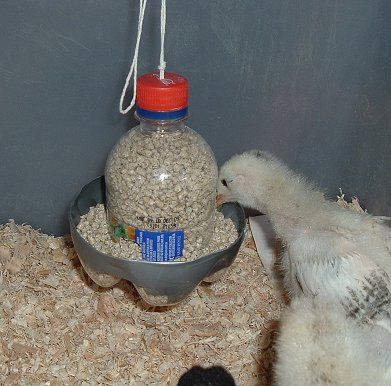 It can be given both fresh and boiled. The content of beets in the diet is about 15%. It can be given both fresh and boiled. The content of beets in the diet is about 15%. |
| Pumpkin | It contains a lot of vitamins and microelements. The product is added in an amount not exceeding 15% of the total volume. |
Protein components provide the daily requirement for amino acids. Protein sources are also rich in vitamins and minerals. They can be of plant and animal origin. Amino acids are well absorbed by the body. Animal proteins are obtained from various types of flour:
- fish. This product makes up to 8% of the diet, but is not used in broiler feed so that the meat does not have a specific smell;
- bone. In terms of the amount of proteins, it is not inferior to cereals, and at the same time it is rich in fats (11%) and vitamins A and E. It is given to chickens from a month old;
- blood. The product is rich in essential amino acids, but in high concentrations it provokes indigestion.
 Its share in the diet should not exceed 4%;
Its share in the diet should not exceed 4%; - pen. This component is used as an available source of protein to balance the feed composition. It is added in small amounts (up to 2%).
Dairy products are also a source of well-digestible animal protein: cottage cheese or whey. Their inclusion in feed mixtures for laying hens increases the egg production and fertility of chickens.
Legumes are richest in vegetable proteins:
- soy in terms of percentage and qualitative composition of proteins and amino acids is practically not inferior to products of animal origin, it also contains vitamins and minerals;
- peas also provide protein requirements for poultry, although to a lesser extent; chickens do not eat it well because of the specific smell and taste, therefore, no more than 10% is introduced into the feed;
- soybean and sunflower meal and cake are an inexpensive, highly digestible source of amino acids. In compositions for adult chickens, their share is 15-17%, for chickens and young animals - 10%.

General feeding rules
| Each individual should consume approximately 15-30 g of food per day: how much depends on the breed, weight of the chicks, and the intensity of their development. In general, the amount of feed each time should be such that the young hens will eat it in 30 or 40 minutes. The remains must be removed from the feeders so as not to deteriorate, and the feeders themselves must be washed and dried. |
If the chicks do not eat the feed given to them often, then its rate should be reduced. If, on the contrary, the food is eaten quickly, then it is desirable to increase its volume.
Feed for chickens of various ages
| PC-2 | Designed for chicks under 7 weeks old. It is produced in the form of finely ground grains, designed for an insufficiently unformed digestive system, easily digestible, contains all the useful trace elements.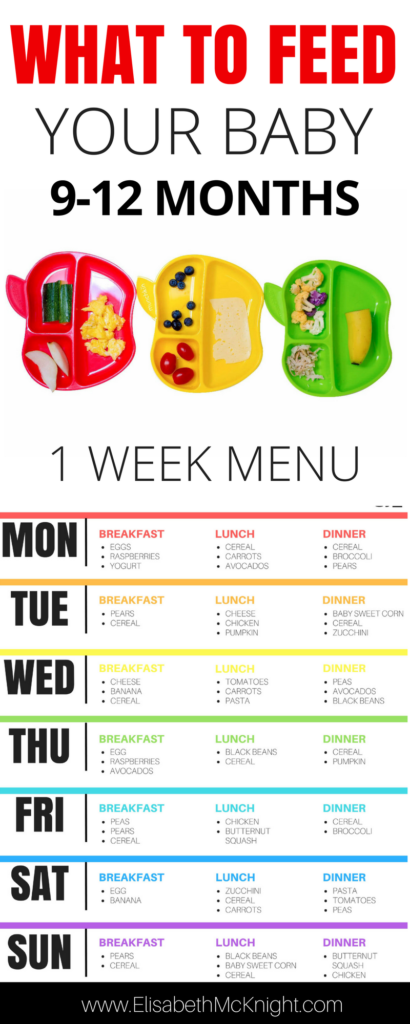 |
|---|---|
| PC-3 | Balanced mix for young animals 8-20 weeks old. Promotes rapid growth and proper formation of the reproductive system. It is produced in the form of grains with medium-sized fractions. |
| PC-5 | Designed for broiler chickens from 2 weeks to 1 month of age. It consists of a complex of easily digestible components that stimulate a set of muscle mass. |
| PC-6 | It has similar characteristics, but is designed for broilers older than a month. |
All types of feed can be divided into three groups:
| carbohydrate | Protein | Vitamin |
|---|---|---|
Promote accelerated growth and muscle mass gain. Their composition is dominated by cereals and vegetables. Chickens digest foods high in carbohydrates well, which cause a slowdown in metabolism and rapid weight gain. Such feeds are designed for broilers and increase the average carcass weight.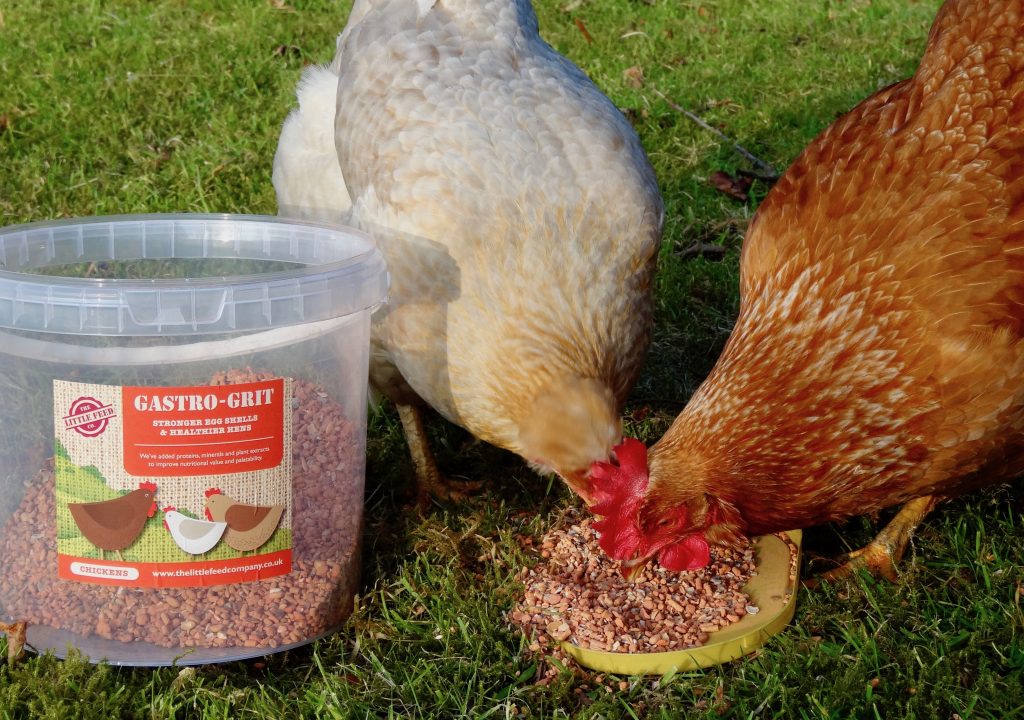 | Such compound feeds are developed mainly for laying hens. A large amount of protein increases the productivity of the bird, improves the palatability of the eggs, and makes the shell stronger. | Strengthen the immune system, help to survive the winter period. Usually produced in the form of concentrates, which enrich the main diet. |
According to the form of release, the compositions are of 2 types.
| Loose ones consist of fine-grained components. The disadvantage of such compositions is that they are worse absorbed. The chicken chooses tasty crumbs from the feed, and the less appetizing ingredients are thrown away. As a result, the bird receives less nutrients. In addition, a lot of dust remains in the feeder. However, it is impossible to completely abandon loose compositions. Chickens in the first weeks of life are not able to swallow and digest large granules, therefore they can peck only small grains. |
Expanded feed is produced by short-term heat treatment under high pressure. Nutrient mixtures are in the form of granules and contain liquid components in their composition. The advantages of expanded compositions include:
However, when heated, some of the vitamins are destroyed. |
Feeding frequency
The first time chickens are fed on the same day they are born. Then, until the age of 7 days, the chicks of meat breeds are fed 6-8 times a day, from the 2nd week of life - 6 times, from the 3rd - 4 times a day, by the age of one month, chickens are fed three times a day. Chicks of egg breeds up to 1.5 weeks are fed 5-6 times a day, and by the month they are gradually transferred to 3 meals a day.
Chicks of egg breeds up to 1.5 weeks are fed 5-6 times a day, and by the month they are gradually transferred to 3 meals a day.
When choosing a mixture, it is recommended to give preference to complete formulations. However, if the breeder has enough of his own food, you can limit yourself to concentrated additives to enrich it. Such compositions are marked with the QC marking. Concentrates for meat and egg-bearing breeds solve different problems:
| for broilers | for laying hens |
|---|---|
|
|
It is unacceptable to use concentrates as the main feed, since an excess of nutrients is no less harmful than their deficiency.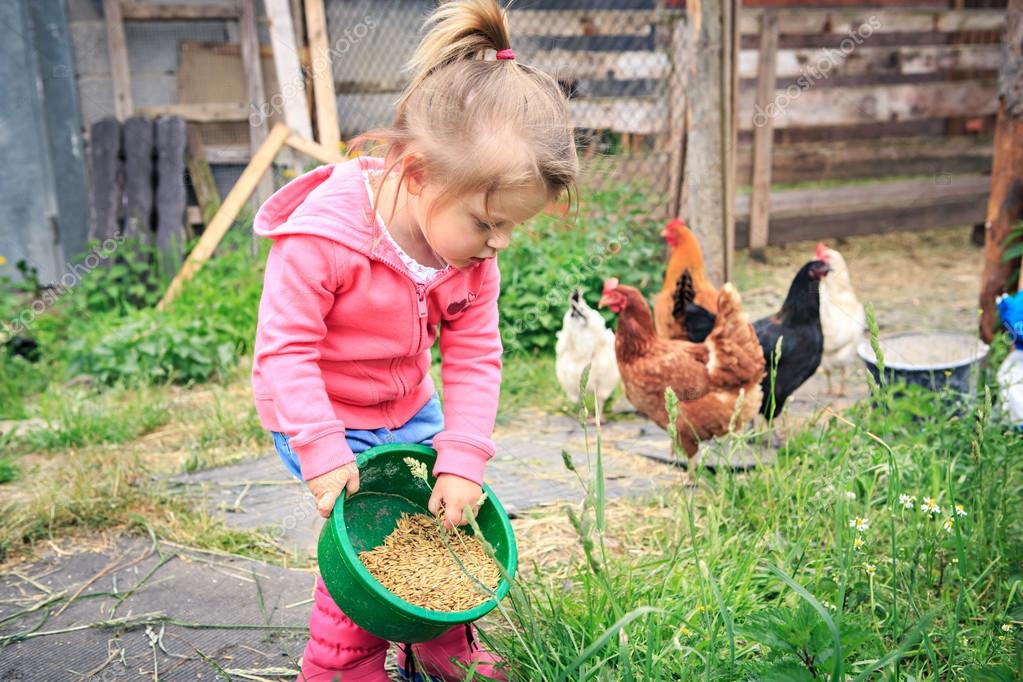 BVMB is introduced into the composition of the mash, taking into account the age of the chickens.
BVMB is introduced into the composition of the mash, taking into account the age of the chickens.
Feeding Features
| 1st day of life | Feeding of chickens of egg breeds begins immediately after they dry out. The first food for newborn chickens should be a hard-boiled egg. It is cut as small as possible so that the chicks can swallow small crumbs and roll it in semolina to prevent pieces from sticking to the paws and fluff. In the brooder where they are, they put a drinker with clean, boiled and cooled water. Newly hatched chicks are also fed boiled eggs under the brood hen. |
|---|---|
| 2nd day | On the 2nd day, the chicks are already given a mash of eggs and homemade low-fat fresh cottage cheese (the ratio of ingredients is 1 to 1). The formula for feeding day-old chicks should be fresh and fed every 3 hours. |
| Week 1 | From the 3rd day, chickens are fed with a more varied mixture of cottage cheese, boiled eggs, crumbly porridge from corn, oat or wheat chips (the share of cereals should be 65%). Finely chopped greens and boiled red carrots grated on a fine grater are added to them. You can give germinated grain or grass flour at the rate of 2-3 g per chicken per day. More than 5 g of such flour cannot be fed due to the high content of fiber in it. Separately, a little skimmed milk or yogurt is poured into the container; it is better not to add them to the mixers. Twice a week, a few crystals of potassium permanganate are added to the water so that it becomes slightly pink. Keep it in drinkers for no more than 0.5 hours, and then replace it with clean water. This protects chickens from stomach diseases. You can feed the chicks with special industrial compound feed for chickens from the first days of life. It is made up of products that are easily absorbed by the body of small chickens and fully satisfy all their needs. Finely chopped greens and boiled red carrots grated on a fine grater are added to them. You can give germinated grain or grass flour at the rate of 2-3 g per chicken per day. More than 5 g of such flour cannot be fed due to the high content of fiber in it. Separately, a little skimmed milk or yogurt is poured into the container; it is better not to add them to the mixers. Twice a week, a few crystals of potassium permanganate are added to the water so that it becomes slightly pink. Keep it in drinkers for no more than 0.5 hours, and then replace it with clean water. This protects chickens from stomach diseases. You can feed the chicks with special industrial compound feed for chickens from the first days of life. It is made up of products that are easily absorbed by the body of small chickens and fully satisfy all their needs. |
| 2-4 weeks | From 1.5 weeks of life, a little sunflower or soybean meal (3-4% of the total food volume), chalk or shells, bone meal (5-7% of the feed amount or 2-3 g per 1 chick). Particles of top dressing should not be more than 1-2 mm. Very fine gravel or sand washed in water is placed in a separate container. After 10 days, eggs are removed from the diet, but other components are introduced, for example, root crops (boiled potatoes, etc.). Salt, rice, rye, wheat bran (up to 10%), herbal flour (6-10%) are introduced into the menu of two-week-old chickens. From 3 weeks old, chicks gradually begin to accustom themselves to whole grains. Particles of top dressing should not be more than 1-2 mm. Very fine gravel or sand washed in water is placed in a separate container. After 10 days, eggs are removed from the diet, but other components are introduced, for example, root crops (boiled potatoes, etc.). Salt, rice, rye, wheat bran (up to 10%), herbal flour (6-10%) are introduced into the menu of two-week-old chickens. From 3 weeks old, chicks gradually begin to accustom themselves to whole grains. |
| 1 month | At this age, the young are already quite strong, they can spend time walking, where they independently find greenery, seeds of various plants, worms and beetles. If the birds are in a closed aviary and cannot pluck the grass, then they need to be given it along with grain and vegetables. In general, the share of green grass in the diet of one-month-old young animals should be about 1/3 part, no less. Grain can be given both ground and whole: the birds are already able to peck it. It can be anything: wheat, barley, corn, oats, etc. At this age, legumes can also be fed: peas, chickpeas, small beans, etc. In addition to grain products, you can feed root crops, fresh or boiled, to monthly chickens, vegetables from the garden and their tops, kitchen waste of both plant and animal origin, bran, meal and cake, compound feed. From mineral additives - bone and fish meal, chalk or lime, shell rock, salt. In addition to food, young animals should always have clean water in drinking bowls and pebbles that the bird needs for normal digestion. At this age, legumes can also be fed: peas, chickpeas, small beans, etc. In addition to grain products, you can feed root crops, fresh or boiled, to monthly chickens, vegetables from the garden and their tops, kitchen waste of both plant and animal origin, bran, meal and cake, compound feed. From mineral additives - bone and fish meal, chalk or lime, shell rock, salt. In addition to food, young animals should always have clean water in drinking bowls and pebbles that the bird needs for normal digestion. |
Chickens of meat breeds differ from egg breeds in that they need more complete proteins and vitamins, so their diet should be tailored to this feature. Therefore, it is necessary to give more protein feed, such as legumes (grains and green mass), meat and bone and fish meal, fresh kitchen waste. It should also be borne in mind that they eat more, so they need to be fed more often, especially in the first days of life.
Farmer's councils
When changing nutrition, the sensitivity of chickens to changes in composition should be taken into account. For this reason, birds should be transferred to a different diet gradually, over 3-5 days, daily adding new food to the usual food, gradually increasing its amount.
For this reason, birds should be transferred to a different diet gradually, over 3-5 days, daily adding new food to the usual food, gradually increasing its amount.
There should always be fresh water in the drinker, in which a little potassium permanganate is diluted - so much so that the liquid does not turn pink.
It is advisable to mix common salt (up to 5 g per 1 kg of the mixture) and ground egg shells into the feed.
The main disadvantage of self-prepared mixtures is the fragility of their storage. In contrast, prepared feed can be left in the feeder for as long as the chicks need to saturate.
In our company, you purchase safe, certified mixtures with high nutritional value. Products exceed the requirements of GOSTs in quality. At your request, it is possible to develop an individual recipe for specific chicken breeds.
The MEGAMIX company cooperates with a network of dealers in Moscow and regions. You can clarify the terms of the order and delivery by phone +7 (8442) 97-97-97 or on our website.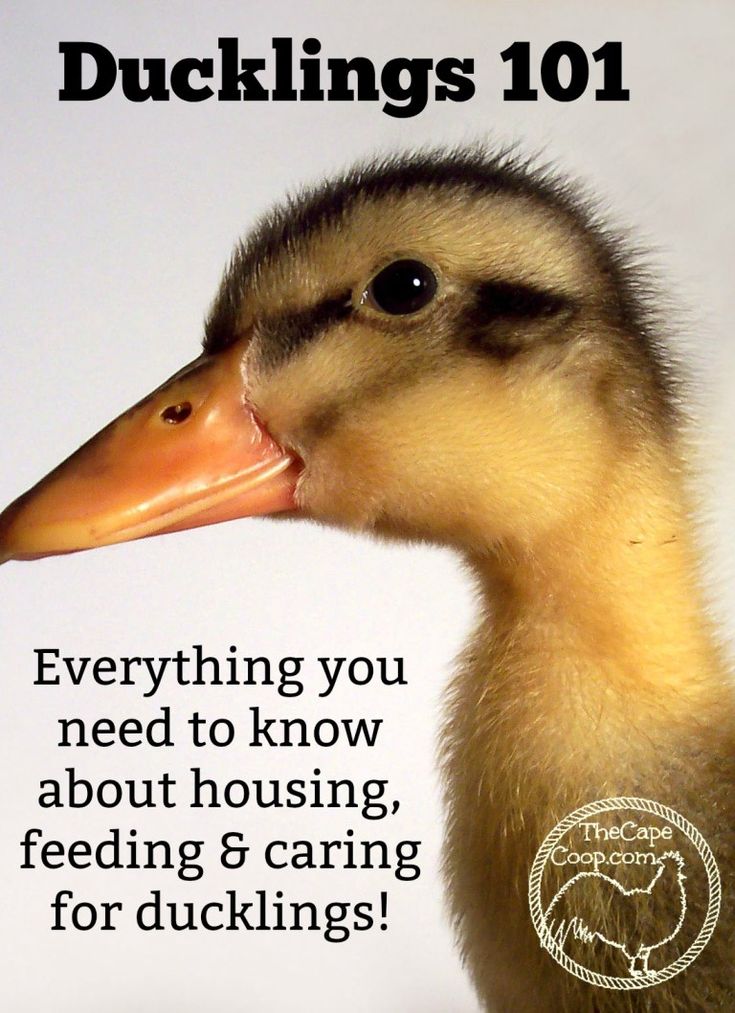
Free consultation
Ask a question to a specialist or order a price list
Telephone
Comment
09.11.2020
What is the best food for chickens — avamarket.com.ua
The diet of birds is essential to increase the productivity of their breeding and growth rates. It affects the level of morbidity and mortality of animals. The diet of chickens should be varied, balanced and nutritious. An important factor is its digestibility for the body of a young bird.
Formulating the correct diet for chicks
During the first weeks of life, it is especially important for chicks to saturate their diet with vitamins, minerals and trace elements. During this period, there is an intensive growth and development of all animal organ systems. The chicken is actively gaining weight, the metabolism is striking at its pace, while the immune system is not fully formed. This makes young animals particularly susceptible to various diseases. What to keep in mind when planning your diet
What to keep in mind when planning your diet
So what is a balanced diet? Here's what it looks like:
- squirrels. Main source: cereals: millet, corn, wheat. Less commonly used whey powder, reverse, egg powder. A diet built only on cereals leads to a deficiency of lysine (an essential amino acid). Lack of lysine reduces fertility in females, provokes weight loss, loss of appetite;
- carbohydrates. This is the source of energy for the chicken. But an inadequate diet leads to a deficiency of hyaluronic acid. This substance is responsible for bone fragility. Acid deficiency causes diseases of the joints, which significantly reduces the life span of the animal;
- lipids (makuha sunflower meal, soybean meal). Lipid deficiency leads to sexual sterility, lesions of the excretory, cardiovascular and nervous systems, and a decrease in growth rates;
- minerals. Calcium and phosphorus are part of the bone tissue. Without these elements, bones become brittle.
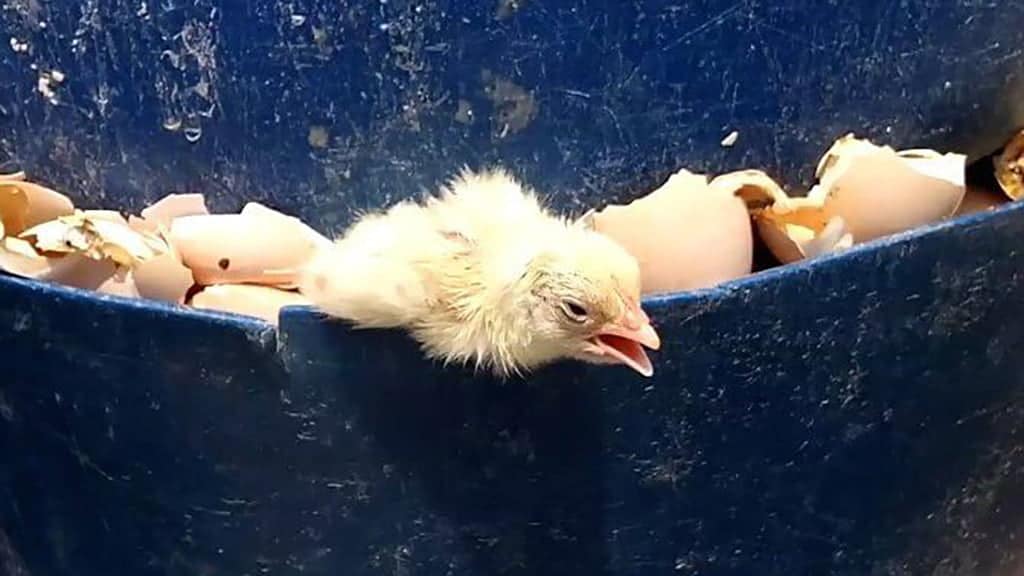 Potassium and sodium are essential for the normal functioning of the nervous system. Magnesium is directly involved in metabolism. Iron is a key part of hemoglobin. Hemoglobin is a protein substance that is responsible for the transport of oxygen throughout the bird's body. Iodine is essential for the functioning of the endocrine system. It should be noted that grain feed, which is the main component of compound feed for birds, contains a very small amount of calcium. But they are a rich source of phosphorus. To enrich the bird's body with calcium, it is necessary to use the following plant foods: hay or haylage from alfalfa, green mass of other legumes. Animal foods are rich in both calcium and phosphorus. Fish meal or meat and bone meal is an invaluable storehouse of these macronutrients. To make up for the potassium deficiency, offer the bird boiled carrots and potatoes. Buckwheat is rich in magnesium, you will find sodium in corn, cottage cheese and organ meats. The green parts of leguminous plants, oatmeal, millet and pearl barley are rich in almost all trace elements (these include iodine, iron, zinc, chromium, copper, etc.
Potassium and sodium are essential for the normal functioning of the nervous system. Magnesium is directly involved in metabolism. Iron is a key part of hemoglobin. Hemoglobin is a protein substance that is responsible for the transport of oxygen throughout the bird's body. Iodine is essential for the functioning of the endocrine system. It should be noted that grain feed, which is the main component of compound feed for birds, contains a very small amount of calcium. But they are a rich source of phosphorus. To enrich the bird's body with calcium, it is necessary to use the following plant foods: hay or haylage from alfalfa, green mass of other legumes. Animal foods are rich in both calcium and phosphorus. Fish meal or meat and bone meal is an invaluable storehouse of these macronutrients. To make up for the potassium deficiency, offer the bird boiled carrots and potatoes. Buckwheat is rich in magnesium, you will find sodium in corn, cottage cheese and organ meats. The green parts of leguminous plants, oatmeal, millet and pearl barley are rich in almost all trace elements (these include iodine, iron, zinc, chromium, copper, etc. ). Wheat bran, sunflower seeds and pumpkin seeds will also be useful.
). Wheat bran, sunflower seeds and pumpkin seeds will also be useful. - vitamins. We propose to pay special attention to this class of compounds. Vitamins can be divided into two groups: fat-soluble and water-soluble. The first group includes the following: Vitamin A. Its deficiency can lead to a decrease in visual acuity, a slowdown in growth. Vitamin D. It helps the body absorb magnesium, calcium and phosphorus. Vitamin E. The function of vitamin E is to protect the cell membrane from oxidation. Natural vitamin E in feed is quickly destroyed by heat, moisture, oxidized fats. Therefore, it is difficult to accurately predict the amount of active vitamin E in feed. Vitamin K. It is an active participant in the process of blood coagulation in animals. Water-soluble vitamins include: Vitamin B4. Required for the synthesis of certain classes of lipids. Vitamin B7 . He also takes a direct part in lipid metabolism.
 Vitamin B9. Responsible for the protein metabolism of the body, with its lack, the growth rate and weight gain slow down significantly. Vitamin B12 (nicotinic acid) is essential for the metabolism of carbohydrates, proteins and fats. Vitamin C (ascorbic acid). It is the main water-soluble antioxidant of the animal body.
Vitamin B9. Responsible for the protein metabolism of the body, with its lack, the growth rate and weight gain slow down significantly. Vitamin B12 (nicotinic acid) is essential for the metabolism of carbohydrates, proteins and fats. Vitamin C (ascorbic acid). It is the main water-soluble antioxidant of the animal body. - water (water consumption by young animals directly depends on the temperature regime in the poultry house). The amount of water consumed by the animal per day should be twice as much as the amount of feed.
Daily feeding of chicks: from the first minutes
Feeding of newborns and one-, two-day-old chicks
As we have already mentioned, the immune system of day old chicks is not fully developed. They need special care and strict adherence to the rules of their content. The temperature in the room where the birds are kept should be at least 29-30 ° C, only after a week the temperature can be gradually reduced, bringing it to 18-20 ° C in 3-4 weeks. The room must be clean and well ventilated. Drinking bowls must be regularly filled with boiled water at room temperature and monitored for their immediate cleanliness. The feeder should also be clean, free of old feed and droppings. You also need to carefully monitor the cleanliness and dryness of the litter for chickens. It is important to keep young animals separate from adult birds. Compliance with hygiene standards for keeping young animals is the key to their successful growth and strengthening of the immune system.
The room must be clean and well ventilated. Drinking bowls must be regularly filled with boiled water at room temperature and monitored for their immediate cleanliness. The feeder should also be clean, free of old feed and droppings. You also need to carefully monitor the cleanliness and dryness of the litter for chickens. It is important to keep young animals separate from adult birds. Compliance with hygiene standards for keeping young animals is the key to their successful growth and strengthening of the immune system.
How to feed chickens correctly?
Don't forget that when the chick hatches from the egg, it eats the rest of the egg, which can give it enough nutrients for the first hours of life. Therefore, do not offer food to the bird right away, give it a little time to dry out and adapt to new environmental conditions. But, after 1-1.5 hours, offer the chicken to eat. For the first feed, boiled eggs are well suited, which are finely chopped beforehand. Semolina or corn grits, cottage cheese or low-fat kefir, milk powder, compound feed for chickens, which we can additionally enrich with a multivitamin complex. It is necessary to offer food in the first days of life should be every 2-3 hours without a break at night. Thus, day old chicks eat 8-10 times a day.
It is necessary to offer food in the first days of life should be every 2-3 hours without a break at night. Thus, day old chicks eat 8-10 times a day.
The freshness of all products that we offer to animals must be monitored. Take into account that the diet should be balanced in terms of the amount of proteins, fats and carbohydrates, be sufficiently fortified and nutritious. Now chickens are actively gaining weight and need all micro and macro elements without exception. Therefore, the best solutions for organizing feeding will be the use of special complete feed. But don't put too much food in the feeders, let them be about a third full. Otherwise, the chicks will trample it. To prevent diseases of the gastrointestinal tract, it is recommended to periodically add a weak solution of potassium permanganate to the water that chickens drink. Water must be boiled before use.
Feeding week-old and one-month-old chicks
What should be fed to chicks a week after birth? Now you can introduce cereals from corn, oatmeal, wheat, semolina in fish or meat broth into the diet, offer chopped boiled fish, meat waste. A week after hatching, offer chickens a mixture of cereals, so their diet will become more varied. But practice shows that fooling around with different types of feed, preparing a mixture for chickens on your own is difficult and time-consuming. Yes, and ready-made cereals turn sour very quickly, go bad. Therefore, it is easier, cheaper and more convenient for a farmer to feed chickens with ready-made feed. In addition, sorbents, probiotics and acidifiers are often introduced into the finished feed. They form the bird's immunity, protect against eating disorders.
A week after hatching, offer chickens a mixture of cereals, so their diet will become more varied. But practice shows that fooling around with different types of feed, preparing a mixture for chickens on your own is difficult and time-consuming. Yes, and ready-made cereals turn sour very quickly, go bad. Therefore, it is easier, cheaper and more convenient for a farmer to feed chickens with ready-made feed. In addition, sorbents, probiotics and acidifiers are often introduced into the finished feed. They form the bird's immunity, protect against eating disorders.
Create a pet feeder that you can fill with small pebbles, gravel and eggshells. The fact is that chickens, unlike humans, do not have teeth with which they could grind food, this is what pebbles are for. They are swallowed and enter the stomach, where they contribute to a thorough grinding of food, and also slow down the passage of the food bolus through the digestive tract, which improves the absorption of all nutrients.
Feed consumption rates for chicks
What is the best feed to feed broilers? There is no definite answer to this question. All feed can be divided into hard and soft.
The first group includes grains and seeds of plants, the second - cereals, fish and meat waste, dairy products, eggs, herbs, boiled vegetables. Note that soft feeds are faster digested and better absorbed, so they are preferable to use for fattening day-old chicks.
In the conditions of modern poultry farming, after the chicken reaches the age of ten days, it is often transferred to the dry type of feeding, preferring compound feed and cereal grains.
In the first 5 days of life, one head needs about 4 g of grain, 1 g of greens and cottage cheese, 2 g of eggs and 5 g of kefir per day, in the next 5 days we double the portion of the proposed products, only the number of eggs remains the same (about two grams per head per day), add bone meal and crushed chalk in the amount of 0.2 g per head per day. On the tenth day, we increase the portion by another 1.5 times and add boiled vegetables (we mentioned above which vegetables can be offered to the chicken), they need about 4 g per day. Then every 10 days we increase the portion of all products by 1.5 times until the age of 60 days.
On the tenth day, we increase the portion by another 1.5 times and add boiled vegetables (we mentioned above which vegetables can be offered to the chicken), they need about 4 g per day. Then every 10 days we increase the portion of all products by 1.5 times until the age of 60 days.
If you decide to prefer a dry diet for poultry, and such a diet consists of compound feed and grain, then the feed consumption rates will be approximately as follows: the first 5 days of life - 15-20 g of dry feed per head per day, 6-18 days of life - 25-85 g, 19-37 days of life 90-155 g, 38-45 days of life - 160-170 g of dry food. So, within a month and a half, we gradually increase the amount of dry food per individual and bring it up to 170 g. Recall that the chicken should receive 1.5-2 times more water.
In order to understand whether the animal receives enough nutrients, we recommend weighing and monitoring weight gain. After 10 days from birth, the chick should weigh at least 200 g, at the age of one month this figure should increase by about 4 times and reach 800 g.

 For broilers, loose compound feed can be introduced into the diet from the first days of life, and for laying hens - from the second week. When using dry mixes, it is important to provide the hens with sufficient drinking water.
For broilers, loose compound feed can be introduced into the diet from the first days of life, and for laying hens - from the second week. When using dry mixes, it is important to provide the hens with sufficient drinking water. 






